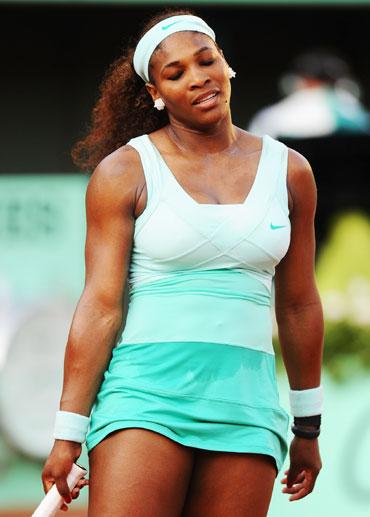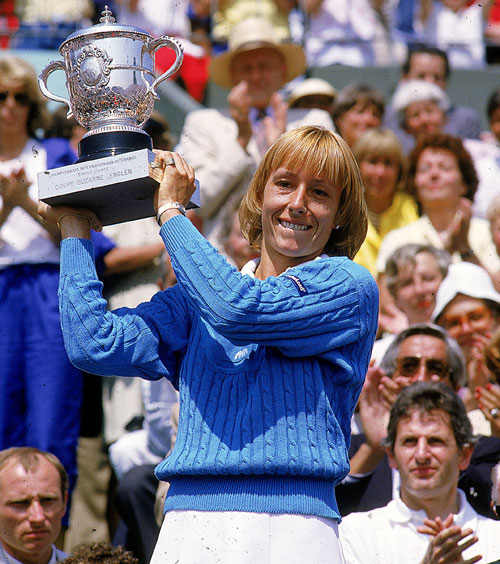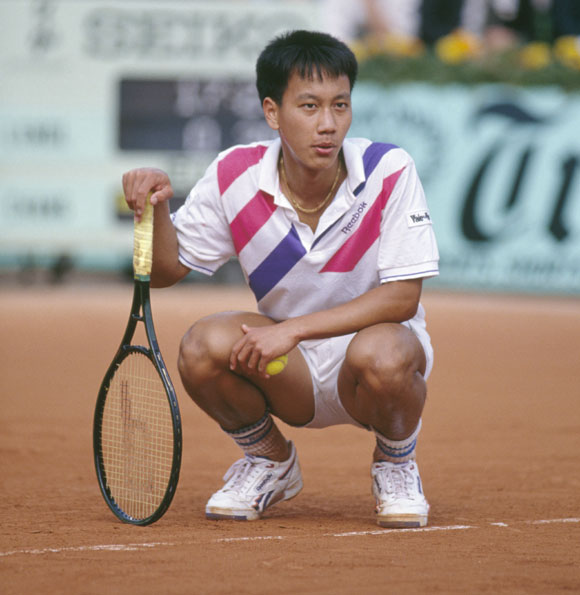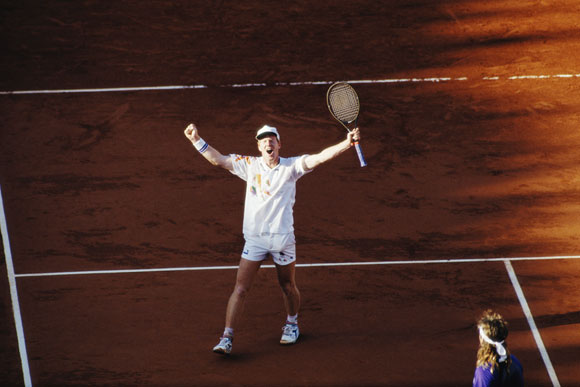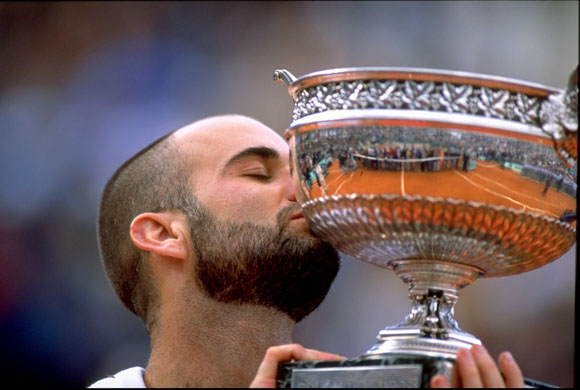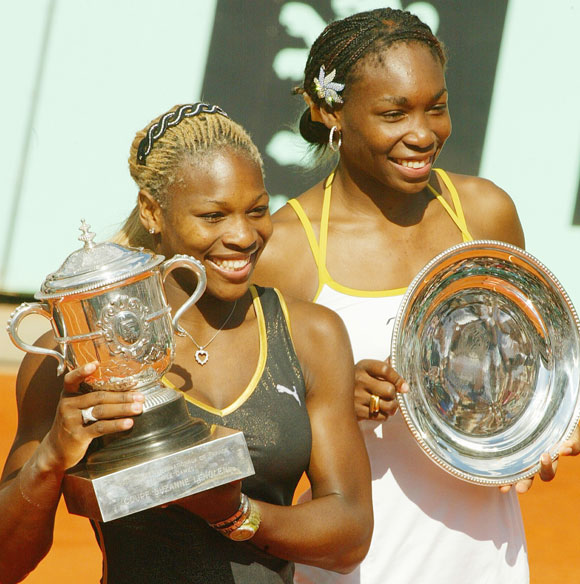 | « Back to article | Print this article |
Despair again for Americans at the French Open
The American failure at the Fench Open in the last decade, says Bikash Mohapatra, can be put down to a lack of adaptability, and application on the red clay of Roland Garros
Varvara Lepchenko was their last hope...
Most wouldn't have heard the name mentioned above before. The Tashkent-born player caused a huge upset by beating 2010 champion and last year's beaten finalist Francesca Schiavone, and survived thereafter to become the lone American player to make it to the second week of the French Open.
But Petra Kvitova's hammering Lepchenko in straight sets in their fourth round encounter on Monday night meant the American interest in French Open 2012 was over before the quarter-final stage.
While Andy Roddick, the last American man to win a major but never quite comfortable of the red dirt in Paris, lost in the opening round, 10th seeded John Isner battled five hours and 41 minutes against French wild card Paul-Henri Mathieu in the second round. The fifth set score (18-16) set a French Open record of most games. Only Isner was at the receiving end.
Venus Williams crashed out in the second round as well. However, what was shocking was Serena Williams's opening round defeat, her first ever. Serena was America's best bet and was in great form -- winning marquee events in Charleston and Madrid -- coming into the tournament.
Virginie Razzano's come-from-behind win meant the American hopes had been dashed again. Lepchenko's performance albeit provided some relief.
It's been a decade since an American won in Paris. For that matter, no player from the country has made it to the final at Roland Garros since. Even historically, the French Open is the lone major where the Americans have struggled to assert their authority.
There's something about the red clay in the French capital that American players find difficult to handle, most failing to survive the first week of the competition.
It can be attributed to the fact that they don't play on slow red clay in the United States -- the green clay used in America is faster and offers more bounce.
More importantly, the American failure in Paris in the last decade can be put down to a lack of adaptability, and application.
Evert's seven titles in Paris is an Open era record
While Americans have perennially underperformed on the slow red clay in the French capital, there was a time when they were consistent.
At least their women were.
While Nancy Richey won the title in 1968 -- the first year when it was an open tournament, the legendary Billie Jean King pocketed the title in 1972.
Thereafter, Chris Evert was a dominant player in Paris.
Between winning her first title in 1974 to capturing the trophy in 1986, Evert made it to the decider on nine occasions (in 13 years).
Evert's seven titles in Paris is an Open era record, and it will take some time for any player to get past it.
Navratilova won twice in six finals
Martina Navratilova was never as dominant as Evert at the Roland Garros.
The Czech-born American, nonetheless, won the French Open on two occasions.
She beat teen sensation Andrea Jaeger in straight sets in 1982 and thrashed her eternal rival (Evert) 6-3, 6-1 in the 1984 final.
Besides, the legendary player finished second-best to Evert in three finals (1975, 1985-86).
And Steffi Graf beat Navratiolova in the 1987 title decider to win her first major title.
Chang ended a 34-year drought in 1989
When Michael Chang came from two sets to one down to beat Sweden's Stefan Edberg in five in the 1989 final, he entered the record books.
At 17, Chang not only became the youngest ever Grand Slam champion, but was also the first American man to win the French Open in 34 years.
Tony Trabert was the last American to win in 1955, at the expense of another Swede (Sven Davidson).
There had been American players making it to the final at Roland Garros in the interim -- Herbert Flam, Vitas Gerulaitis, John McEnroe et al. However, none of them could lay their hands on the coveted trophy.
Chang reached the final for a second time in 1995, only to finish second best to rampaging Austrian Thomas Muster.
Courier was a consistent performer in Paris
While Chang ended a 34-year-drought for the American men, he didn't have to wait that long to see a countryman following suit.
The year 1991 witnessed a first all-American men's singles final at Roland Garros in the Open era.
Andre Agassi, the beaten finalist of 1990, was the firm favourite against Jim Courier, playing in his first major final.
Agassi started well, and led two sets to one. Then Courier took over, winning the decider 3-6, 6-4, 2-6, 6-1, 6-4.
Courier returned to Paris the following year and defended his title in style, thrashing Czech Korda 7-5, 6-2, 6-1 in the final.
One of the most consistent (and successful) of the American players in Paris, Courier reached a third straight final in 1993.
The player with the trademark baseball cap was a favourite going into the decider against Sergi Bruguera, having not lost a set in four previous matches.
However, it was the Spaniard who came up trumps in that final, giving the Iberian country their first men's singles champion in 22 years.
Agassi's triumph in 1999 helped complete a career slam
It was third time lucky for Andre Agassi.
Having lost successive finals in 1990-91, the American faced Andrei Medvedev in the 1999 decider.
The Ukrainian, a clay court specialist, raced through the opening two sets.
However, Agassi wasn't prepared to be at the receiving end for a third time.
He mounted a remarkable comeback, even as Medvedev's game collapsed completely, to win 1-6, 2-6, 6-4, 6-3, 6-4.
The win made Agassi only the fifth player ever -- after Fred Perry, Don Budge, Roy Emerson and Rod Laver -- to win all the four major titles. Roger Federer and Rafael Nadal have since joined the elite group.
For the record, no American man has won in Paris since. None have made it to the final as well.
Capriati's win was an unlikely one
Jennifer Capriati's triumph in 2001 was an unlikely one.
The American won the Australian Open that year but coming into the event not many gave her much of a chance, with clay being her least favoured surface.
However, Capriati defied all predictions, beating Serena Williams and top seed Martina Hingis en route, to set up a final showdown with young Belgian Kim Clijsters.
The latter raced through the opening set and had many chances to seal match in her favour in the third.
However, Capriati used all her experience as a shield to thwart all attacks from the Belgian and win 1-6, 6-4, 12-10.
Serena got the better of sister Venus in 2002
The year 2002 witnessed the first (and only) all-Williams final in Paris.
The slow clay nullifies the sisters' power game to a considerable extent and as such is their least favoured surface.
However, that year both bludgeoned all opposition en route.
The final was a disappointment though, Venus being no match for Serena and the latter winning in straight sets (7-5, 6-3).
More importantly, that remains the last occasion when an American player won the French Open.
And it was a decade ago. Taking into account the current lot of American players, it will take some time before the drought is over.
